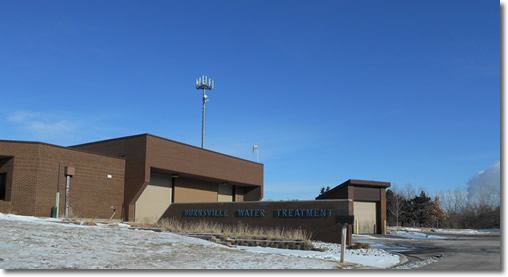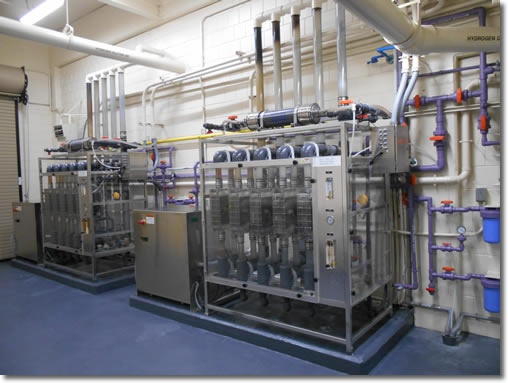Drinking Water Protection
- Drinking Water Protection Home
- About Us
- A-Z Index of Contaminants in Water
- Community Public Water Supply
- Drinking Water Grants and Loans
- Drinking Water Institute
- Drinking Water in Schools and Child Cares
- Drinking Water Revolving Fund
- Laws and Rules
- Noncommunity Public Water Supply
- Source Water Protection
- Water Operator and Certification Training
- Drinking Water Protection Contacts
Related Topics
- Annual Reports
- Drinking Water Risk Communication Toolkit
- Drinking Water Protection External Resources
- Fact Sheets
- Forms
- Invisible Heroes Videos: Minnesota's Drinking Water Providers
- Noncom Notes Newsletter
- Sample Collection Procedures (videos, pictures, written instructions)
- Waterline Newsletter
Related Sites
- 10 States Standards
- Clean Water Fund
- Health Risk Assessment – Guidance Values and Standards for Water
- Minnesota Well Index
- Water and Health
- Wells and Borings
Environmental Health Division
Burnsville Becomes First Metro System with On-Site Hypochlorite Generation
From the Summer 2015 Waterline
Quarterly Newsletter of the Minnesota Department of Health Public Water Supply Unit, Waterline
A complete list of feature stories can be found on the Waterline webpage.
 |
When Linda Mullen took over as water superintendent in Burnsville in 2007, the city was in the process of adding surface-water treatment to its existing plant. Burnsville began purchasing water from the nearby Kraemer Mining and Materials quarry, both to supplement its supply and to help the quarry meet discharge permits.
The surface-water system went on-line the following summer, during one of the worst years in recent history for algae blooms. “Don’t ever put a surface-water system on-line in July,” Mullen said, recalling the number of phone calls the utility received because of taste-and-odor issues.
However, the surface system operated well along with the groundwater plant that has been in place since 1976. Within a few years, another major project loomed when the city began a facilities plan. For the water portion of it, Black & Veatch of Bloomington, Minnesota, explored needs and evaluated options. Upgrades for the utility’s chlorine system stood out.
Mullen said the cost of rehabilitating the chlorine room’s ventilation system was “astronomical,” and a new scrubber would be needed, as well. In addition, safety concerns over the possibility of a leak were a major factor in looking at a new means of disinfecting the water. Within a one-mile radius of the water treatment plant are several schools, a daycare facility, a Wal-Mart, and the city center.
Bo Johnston of Black & Veatch Corporation said they compared the costs of using bulk hypochlorite, generating hypochlorite on-site, and putting in a new gas chlorine system with the required HVAC and scrubber upgrades. Bulk hypochlorite was most expensive, with on-site generation also more than chlorine gas. Safety issues swung the decision from chlorine to on-site hypochlorite generation.
Three manufacturers submitted bids to the city for an on-site system. Mullen said they looked beyond the lowest bid and evaluated the proposals on a 20-year life-cycle cost. Plant operators Dan Giles and Tony White went to South Dakota to look at utilities using this technology, including the plant on the Missouri River in Vermillion, which treats water for the Lewis & Clark Regional Water System, which is projected to deliver water to Iowa and southwest Minnesota.
Burnsville ultimately selected a MicrOchlor system from Process Solutions, Inc. of Campbell, California. The city became the first water system in the Twin Cities metropolitan area to opt for on-site hypochlorite generation and joined Baxter, Otsego, Fairmont, and Isanti as others in Minnesota to use the system.
“This technology has been around for decades,” said Johnston, “but has really taken off in the last 10 years.”
The hypochlorite uses treated groundwater and surface water from the plant’s effluent clearwell. The water is softened so that it doesn’t plug the generator, which has electrolytic cells arranged in a vertical pattern. The softened water is split and passes through the cells in a serpentine pattern. A rectifier converts AC power into DC, an electrical charge across alternating plate creates a reaction, and hypochlorite is produced. The material goes into a bulk tank, and hydrogen gas comes off the top or the reactor. A blower dilutes the byproduct, hydrogen gas, to below the explosive limits.
Johnston explained, “You’re taking an inert substance with salt and making it into a dilute solution of 0.8 percent,” below the hazardous material concentration threshold.
Mullen said that the residual is as good as with chlorine gas, and changes in the system are more stable with hypochlorite. “We don’t have to tweak it all the time,” added White.
The previous chlorine system was gutted with the hypochlorite equipment installed in the space. A three-day supply of hypochlorite can be generated, allowing the utility to make it through a weekend.
The cost of the conversion from chlorine gas to on-site generation of hypochlorite was $1.8 million, which the city was able to absorb in its capital-improvement plan. The operational costs of generating hypochlorite - including the salt, water, and electricity - are higher than chlorine, but the safety considerations made the additional expenses worthwhile.
The new system went into operation in May 2014.
 |
| The hypochlorite generator was installed in the room previously used for chlorine in Burnsville. Below is a photo of the green roof that was constructed on top of the surface water treatment plant in 2007. |
 |
History of On-Site Sodium Hypochlorite Generation
Erin Briggeman of Black & Veatch wrote about the history of on-site sodium hypochlorite generation in a book edited by Black & Veatch Corporation, White’s Handbook of Chlorination and Alternative Disinfectants, 5th edition (copyright 2010 John Wiley & Sons, Inc):
“On-site generation of hypochlorite in the United States was largely inspired by the use of hypochlorite solution during World War I. . . . Its success as an antiseptic for treatment of open wounds led to on-site generation of it in hospitals. . . . Wallace & Tiernan (now part of Evoqua Water Technologies) first made electrolytic chlorinators to provide a safe means of chlorinating swimming pools in buildings where people slept. . . . The chlorinator aroused the interest of Pan American Airways, which, at the time (1936), was establishing refueling sites on its San Francisco-to-Sydney and Orient flights.
“After World War II, the enthusiasm for on-site generation of chlorine disappeared until the hazard potential of chlorine gas stored in containers was evaluated, owing to the proliferation of chlorine gas installations at wastewater and potable water treatment plants. . . . In the 1970s the popularity of on-site generation began to rise once again, largely because of the potential hazards of liquid-gas systems using chlorine stored in containers. . . . Starting in the 1990s, after the advent of the Uniform Fire Code, there has been a great surge in the interest of on-site generation of chlorine. The product is inherently safer because of its lower concentration. . . . Current on-site generation systems produce chlorine solutions containing only 0.8% chlorine, and this concentration is not classified as hazardous.”
Briggeman said more interest in the system was sparked by the terrorist attacks on September 11, 2001. “After the attacks, the risk associated with chlorine gas systems was reevaluated. In addition, with a culture more attuned to risk and safety of operators and surrounding communities, interest in and installation of on-site generation sodium hypochlorite units have seen a significant increase.”
Go to > top.